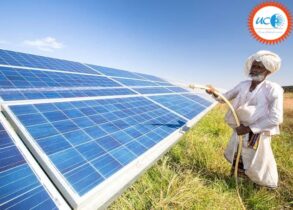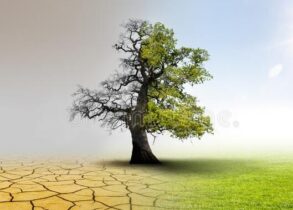Describe how climate change is affecting the Indian Monsoon.
Approach:
- Introduction
- Discuss how the monsoon is affected by climate change.
- Conclusion
In the South Asian region, the monsoon is the predominant weather pattern. It occurs from June to September and contributes between 75 and 80 percent of India’s annual rainfall. Due to the kharif crops’ reliance on monsoon rainfall, the monsoon is essential to the Indian economy. Rainfall during the monsoon is also essential for producing hydroelectricity, replenishing groundwater, and supplying water supplies. However, the monsoon is being significantly impacted by climate change.
Climate Change Effects on the Monsoon:
- Increased Rainfall The impacts of increasing temperatures on monsoon rainfall are discussed by researchers at the Indian Institute of Tropical Meteorology in Pune. The atmosphere can hold 7% extra moisture for every 1 degree C increase in temperature. The rapid warming of the ocean, which has absorbed 90% of the extra heat produced by man-made climate change over the past 50 years, is another factor contributing to an increase in rainfall.
- The thermal disparity between land and sea is decreasing due to climate change, which dries up the monsoon circulation. Due to the rise in sea surface temperature, there is also an increase in air moisture at the same time.
- Middle Eastern events: It has been discovered that dust particles carried into the sky from Middle Eastern deserts become highly heated when exposed to sunshine. Over the Arabian Sea, they alter the air pressure. Because of this, the Indian subcontinent experiences a wetter monsoon season as moisture from above the ocean is transported there via a type of sky-based heat pump.
- Unpredictable rainfall: Extreme fluctuation in rainfall across regions is now commonplace. June rainfall in 2021 was above average across the board. Three of the four regions experienced below-average rainfall in July 2021. However, rainfall in the South Peninsula States and UTs was 26% above average (July 2021).All regions except the East and North-east recorded below normal rainfall in August. At a 24% deficit, 2021 saw the first August drought since 2009.
- The 2022 season has so far followed a similar pattern with significant regional variances. Rainfall was insufficient in 7 states. The three of them are all from the Northeast. Manipur reported a 48% deficit. Deficits of 23% and 20% were observed in Tripura and Mizoram, respectively. Bihar has a 30% deficit. Delhi has a 37% deficit while UP has a 35% deficit in the northwest.
- The Intergovernmental Panel on Climate Change’s 6th Assessment Report states that rainfall has decreased noticeably, with monsoon shortfalls happening more frequently in different parts of South Asia.
- Additionally, it is contributing to a rise in tropical cyclone formation.
20% of the world’s population depends on the Indian summer monsoon for their livelihood, which is vital for India’s agriculture. Agriculture and the Indian economy are at risk from an unpredictable monsoon season. To counteract the negative effects, the government must intensify its efforts. At the same time, the implications of climate change should serve as a wake-up call to the world leadership through these extreme events.





